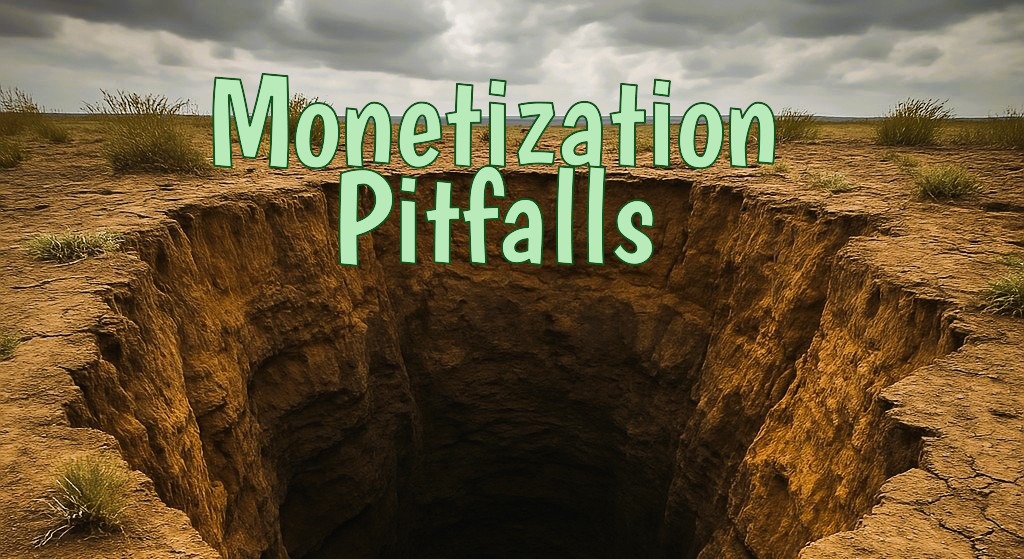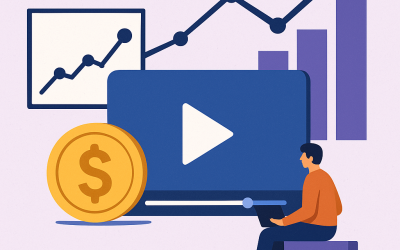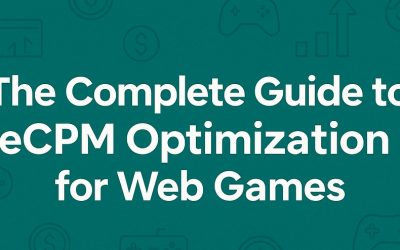Maximizing Earnings and Avoiding Monetization Pitfalls
To get the most out of rewarded video ads, indie developers should approach monetization strategically. Here are some tips to maximize your earnings while ensuring you don’t fall into common traps: So on this post, Maximizing Earnings and Avoiding Monetization Pitfalls, will try to cover few – here you go>
Contents
Leverage Mediation Early (If Possible):
Once you have a steady user base, consider using an ad mediation platform (like ironSource LevelPlay or AppLovin MAX) rather than relying on a single network. Mediation will aggregate multiple ad sources and auction each impression to the highest bidder in real-time, often significantly boosting your average eCPM. It also protects you from one network’s fill-rate drops. For example, if AdMob’s demand is temporarily low in Brazil, another network in your stack might fill those Brazilian user impressions. Many indie developers hesitate due to integration complexity, but there are lightweight mediation SDKs and even services that handle the setup. The extra effort can pay off in higher revenue. If you do use mediation, monitor the performance of each network and adjust your stack (e.g., add a new network or disable one that’s underperforming) to continually optimize. Keep in mind mediation adds some overhead, so weigh the pros and cons based on your scale – very small apps might stick to one good network until they grow.
Track Key Metrics Religiously:
You can’t improve what you don’t measure. Keep an eye on metrics like Impressions per DAU, eCPM, Fill Rate, ARPDAU (Average Revenue per Daily Active User), and Retention for users who watch ads vs. those who don’t. Most ad platforms provide dashboards for these. Watching the data can alert you to issues (e.g., if fill rate in a region is low, you might need another network for that country, or if eCPM dropped, perhaps an advertiser campaign ended and you might try mediation or a different network to compensate). Also track user-centric metrics: are people watching multiple ads per session or just one? Did your retention change after introducing ads? By correlating ad metrics with user behavior, you can fine-tune the frequency and placement. For example, if you see most users only watch one ad and ignore subsequent offers, maybe your second offer is too soon or not enticing enough. Data will guide you to maximize revenue without hurting retention.
Optimize Reward Value Over Time:
The “right” reward might change as your game evolves or as you gather more data. You might find that increasing the reward leads to more engagement up to a point, after which it doesn’t yield extra views (or starts to impact game balance). Continuously evaluate if the reward amount or type is driving the intended behavior. Some developers run limited-time promos (e.g., for one week, double the reward from each ad) to see how it affects usage – this can be a way to gauge elasticity (one study noted running currency sale promotions tied to ad rewards can “drive serious spikes in revenue”). Use such insights to set an optimal permanent reward. Also consider offering different types of rewards and see which users prefer – e.g., some games let users pick one of several reward options (coins vs. a power-up) after watching an ad, catering to different player needs. This not only improves user satisfaction but can increase the likelihood each user finds the reward valuable.
Avoid Over-monetizing Early Users:
A common pitfall is showing too many monetization prompts to new users before they’re hooked on the game. Even though rewarded ads are optional, if the game feels like it’s constantly pushing “watch an ad, watch an ad” from the get-go, it may turn off some players. It’s usually best to first ensure the player is enjoying the core loop (maybe let them play a couple of levels unperturbed) and then introduce the ad feature as a helpful bonus. This goes hand-in-hand with the earlier point about onboarding – introduce it early but thoughtfully. If your early retention (D1, D3) is suffering, check that you’re not bombarding new users. The goal is to integrate ads in a way that enhances the experience – early on, players might not yet appreciate the value of the reward, so it can feel like an ad intrusion. Time it such that their first exposure to a rewarded ad comes at a moment they could really use it (a critical juncture in gameplay), thereby framing it as a savior rather than a nuisance.
Beware of Reward Cannibalization and Economy Balance:
As much as we tout that rewarded ads usually don’t hurt IAP, you should still be careful in designing your in-game economy. If your game has microtransactions, ensure that the rewards from ads don’t completely replace the need for purchases. They should complement IAP by covering the “non-payers” or giving small boosts to payers, not completely satisfy the needs of someone who would otherwise spend. A pitfall would be a game where a user can watch ads over and over to get a premium currency that one could also buy – if the ad supply is unlimited, many players will just grind ads instead of ever buying. So, either limit the number of ads or limit the amount of premium currency they can yield (or use diminishing rewards). Some games even increase the cost of a reward each time in a session: e.g., the first extra life via ad is free, but if you want another immediately, maybe it costs two ads or has a cooldown. These nuances can prevent an inadvertent undermining of your IAP catalog. Regularly review the spending patterns: if you notice players who used to spend $5 now just watch ads and spend $0, you may need to adjust the balance or rewards. However, in most cases if you follow best practices, you’ll find (as earlier stats show) that ads and IAP can happily coexist or even boost each other.
Avoid Ad Overload:
Even though rewarded videos are user-initiated, you should avoid designing a game that excessively incentivizes watching ads to progress. If a user finds that they need to watch 10 ads in a row to get enough currency to do something meaningful, the experience can degrade. Some very ad-heavy games have given rewarded ads a bad name by essentially becoming “ad grind” platforms. Don’t let monetization completely overtake gameplay. A good approach is to set a reasonable daily cap on ad rewards that aligns with a typical play session. That way, a highly engaged user might watch, say, 5 rewarded ads in a day and get good value, but then they’ve maxed out the benefit – any further progress that day should come from playing or paying. This cap protects your user from themselves (some will watch ads endlessly if allowed, then burn out) and protects your game’s integrity. It also incidentally protects your revenue quality – advertisers prefer users who choose to watch a few meaningful ads, not someone hammering ads without really paying attention (those tend to be lower quality engagements). Quality over quantity is a safe mantra.
Monitor Feedback and Iterate:
Pay attention to app reviews, support emails, and community feedback related to your ads. Users will often tell you if something is off – e.g., “The ad froze and I didn’t get my reward,” or “I love that I can get a boost by watching ads, thank you!” Use this feedback to fix issues (technical problems like failed reward delivery or bugs in ad playback) and to gauge sentiment. If you get complaints like “Too many ads,” that could signal you’ve crossed the line somewhere (maybe users feel forced even if it’s “optional”). On the other hand, positive feedback can be highlighted as a strength of your game (e.g., “free-to-play friendly with optional ads”). Especially for web-based games, watch out for technical issues – browsers and devices vary, so ensure the ad experience is robust across them. If you find, say, that on certain phones the video often doesn’t load and players are stuck, that will hurt trust. Keeping the implementation polished is an ongoing task. Use the latest SDK versions, test after updates, and be ready to adjust if an ad partner has issues (for instance, switch to a backup network if one goes down frequently). Treat your ad feature with the same care as any other major feature in your game.
AppLixir Rewarded Video Ad
Rewarded video ads have transformed the way free apps and games can generate income, offering a monetization approach that aligns developer incentives with player enjoyment. For indie developers, this format is especially valuable – it provides a revenue stream that doesn’t require a huge paying user base, and it can actually strengthen user engagement and loyalty when implemented thoughtfully. We’ve explored how rewarded ads function as a value exchange: giving users extra content or perks in return for watching ads. The benefits are clear in the data: higher retention, longer sessions, and significant revenue per user, all achieved without the drop in satisfaction that other ads can cause.
In integrating rewarded videos, the focus should always be on respecting user choice and enhancing the experience. By offering ads at the right moments, with worthwhile rewards, and using best practices like frequency caps and clear communication, even a small indie team can avoid common pitfalls and reap substantial rewards. Additionally, choosing the right ad network or mediation platform is a crucial decision – there is no one-size-fits-all, but understanding the landscape (AdMob vs Unity Ads vs ironSource vs AppLovin, etc.) helps in selecting a solution that fits your game’s platform and audience. Whether you start with a simple single-network integration or dive into a mediation setup for maximum yield, keep monitoring and iterating on your ad strategy just as you would on gameplay features.
By following these strategies, indie developers can maximize the revenue gained from rewarded video ads while maintaining (or even improving) player satisfaction and retention. The overarching theme is to put the player experience first – when the integration is player-centric, the business metrics naturally follow. Rewarded ads work best when players genuinely feel rewarded and not exploited. If you achieve that balance, you’ve unlocked one of the most powerful monetization engines available in the free-to-play arsenal.
Ultimately, rewarded video ads represent a monetization strategy where everybody wins: users feel good about voluntarily earning freebies, developers earn more without driving players away, and advertisers get attentive eyes on their content. In a time when user acquisition costs are high and attention spans are short, rewarded ads offer a way to increase the lifetime value of each player in a player-friendly manner. Indie developers who master this format can level the playing field, generating sustainable revenue while building goodwill with their user community. As you apply the guidance from this white paper – from integration techniques to network selection and optimization – you’ll be well on your way to maximizing your app’s earning potential with rewarded video ads, turning your passion into a thriving, monetized success.



